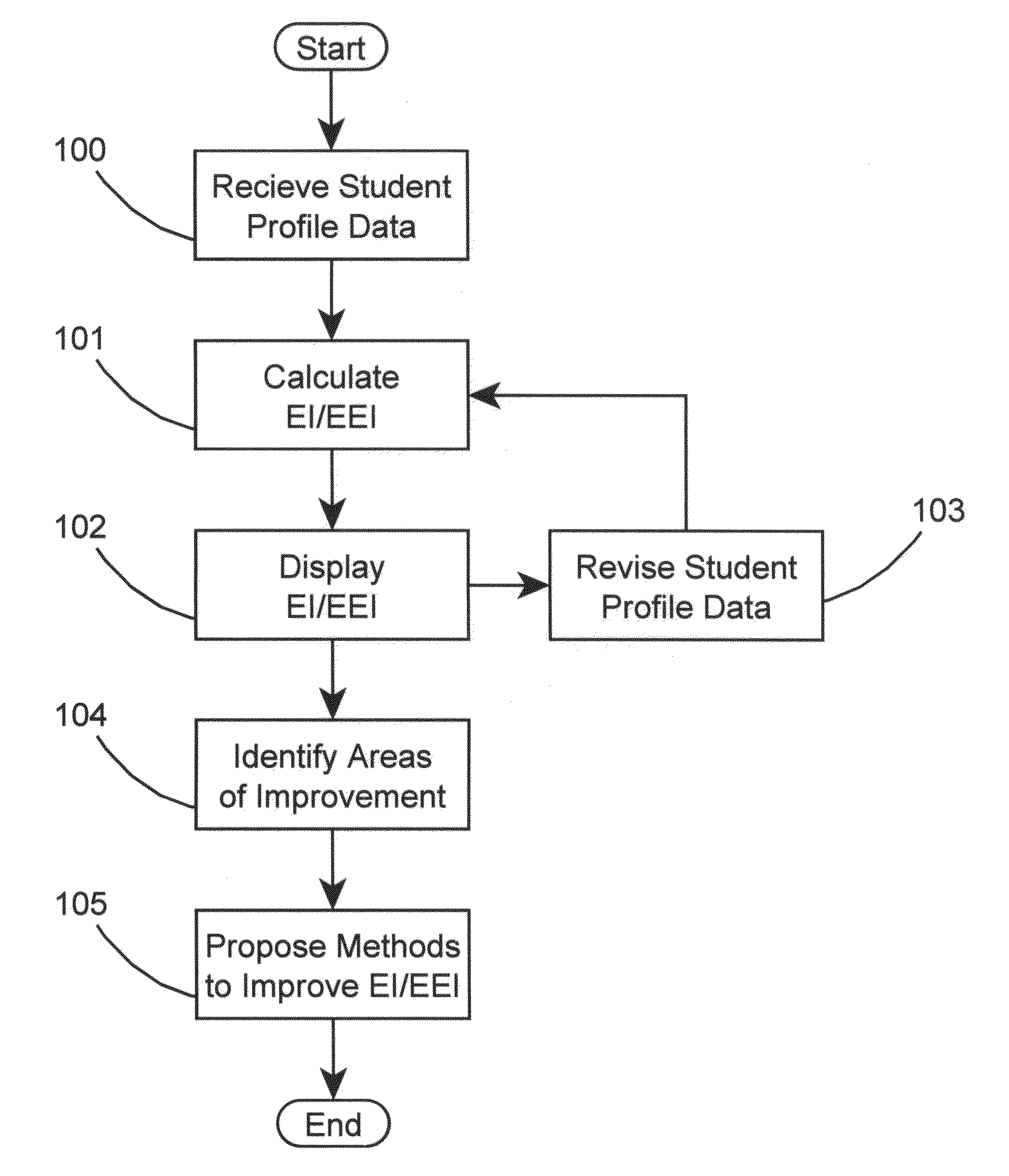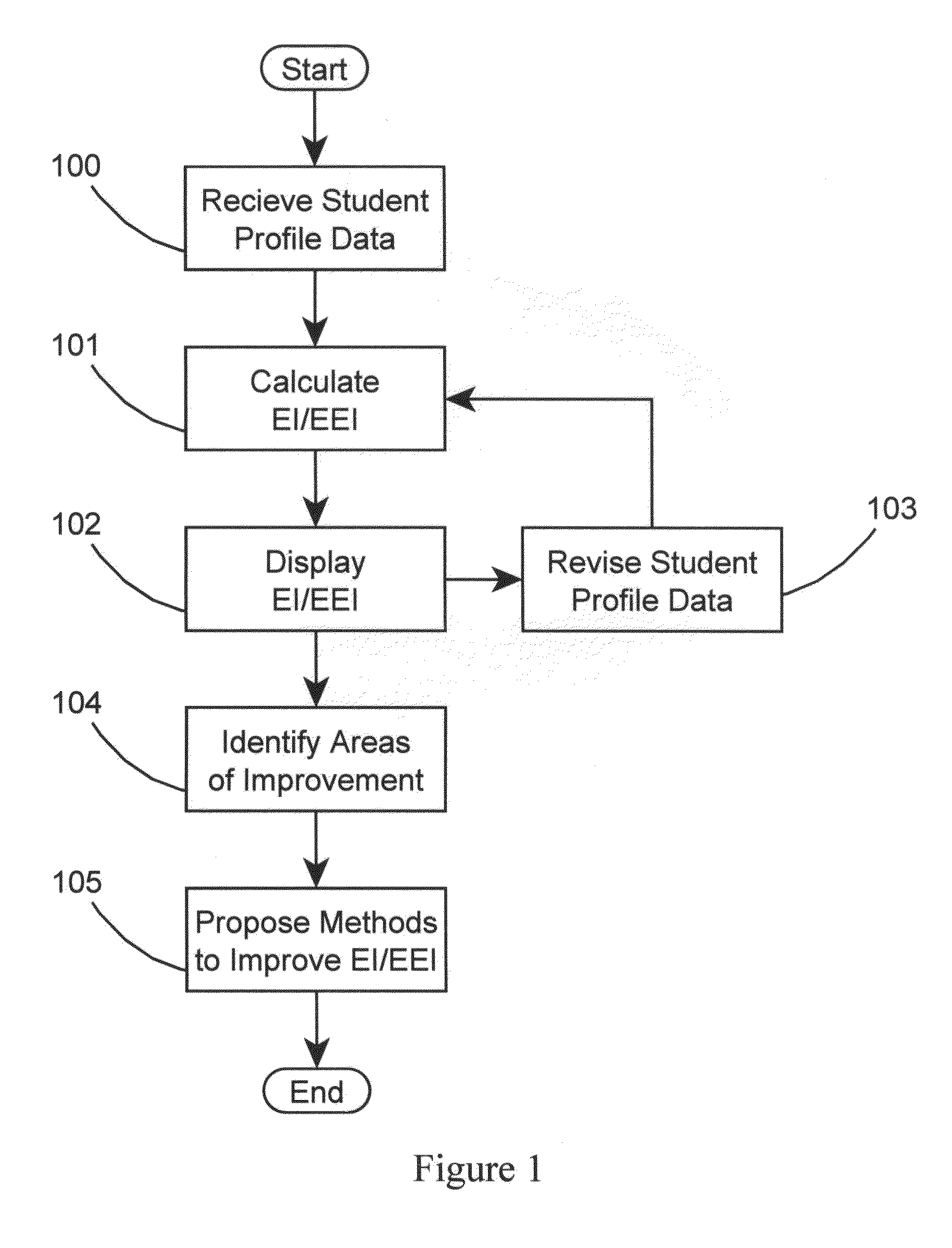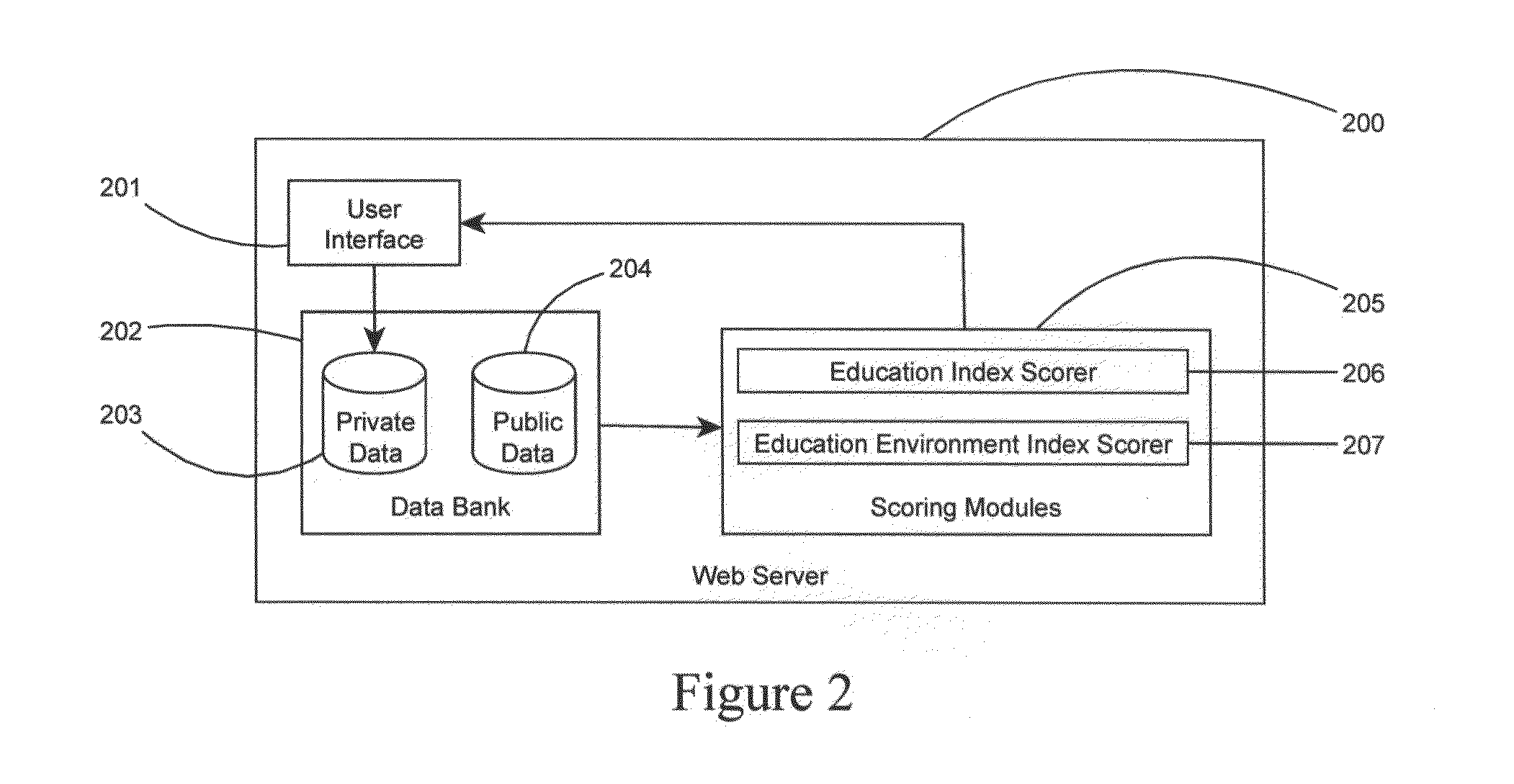Calculating an individual's national, state and district education and education environment index and recommending statistically proven methods of improvement tailored to input from a user such as a child's parent
a technology of education environment and index, applied in the field of data organization and manipulation, can solve the problems of inability to control or even evaluate the education of a child's parent, data is useless to the public, and the possibility is not feasibl
- Summary
- Abstract
- Description
- Claims
- Application Information
AI Technical Summary
Benefits of technology
Problems solved by technology
Method used
Image
Examples
Embodiment Construction
[0016]A system for automatically determining a persistent index for a student's quality and value of education and education environment that can be further tailored to input from a parent user or that student is described.
[0017]In some embodiments, the system uses a web site to receive basic educational information about a student from a user and subsequently displays an initial index of the education based upon the information provided by the user in comparison to an aggregation of public and private education data previously collected by the system. Some user inputs during this initial step may include a residential address (or for more privacy-conscious individuals, a zip code), the student's grade level, a selection of a school in the district containing the residence, and at least one grade for an identified course, but in the ideal scenario, the results from at least one complete personal report card. The system then calculates an index of the student's educational progress f...
PUM
 Login to View More
Login to View More Abstract
Description
Claims
Application Information
 Login to View More
Login to View More - Generate Ideas
- Intellectual Property
- Life Sciences
- Materials
- Tech Scout
- Unparalleled Data Quality
- Higher Quality Content
- 60% Fewer Hallucinations
Browse by: Latest US Patents, China's latest patents, Technical Efficacy Thesaurus, Application Domain, Technology Topic, Popular Technical Reports.
© 2025 PatSnap. All rights reserved.Legal|Privacy policy|Modern Slavery Act Transparency Statement|Sitemap|About US| Contact US: help@patsnap.com



